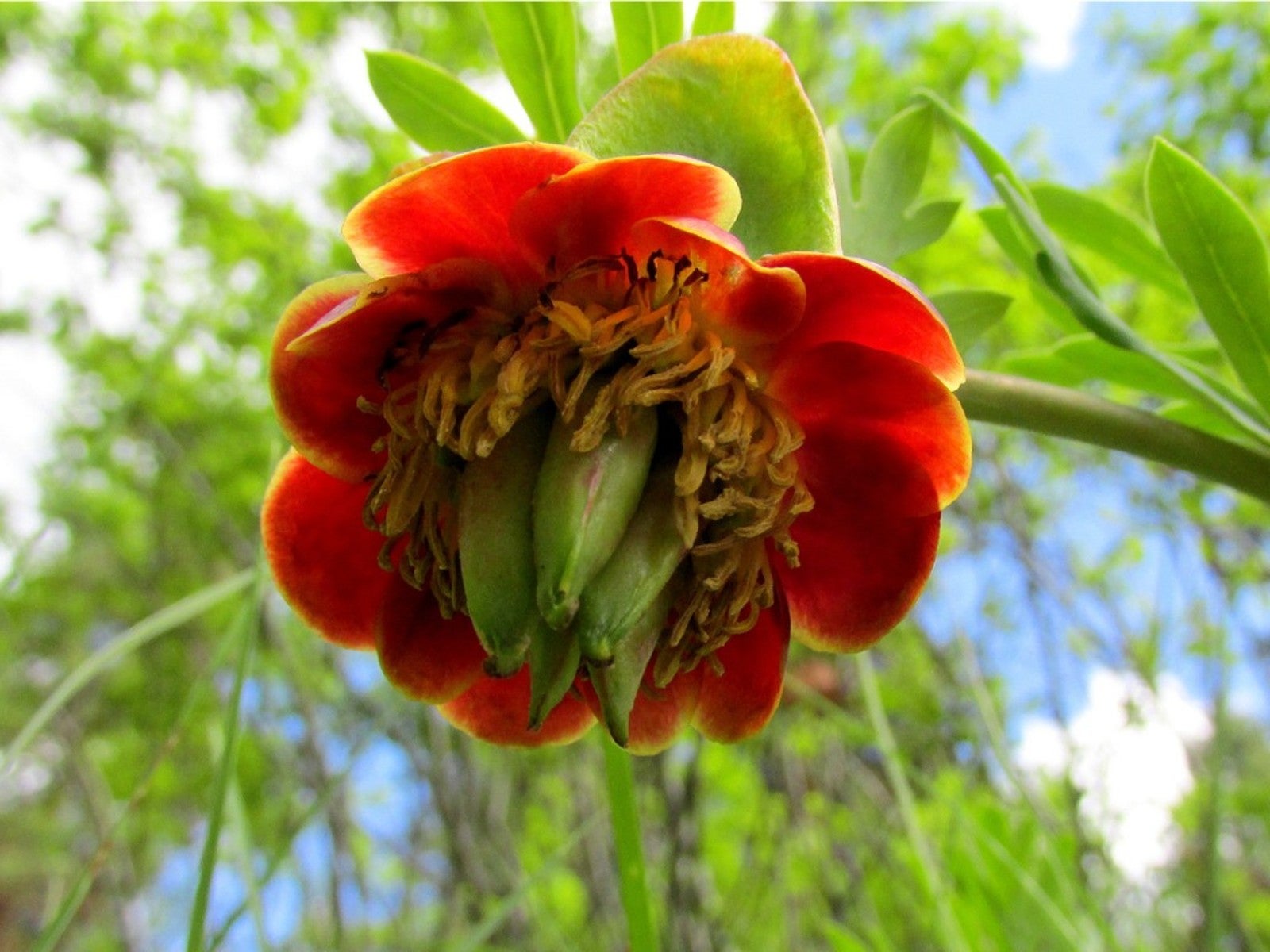Learn About Wild Peony Varieties Native To California


Peonies have long been revered as a classic addition to the home landscape. Herbaceous, Itoh, and intersectional types have been known to thrive for decades with only minimal attention from gardeners. Despite their ease of growth, only a very small number of peony species are actually native to the United States. One such species, the California native peony, is able to flourish within only a relatively small range. Learning more about this unique plant can help gardeners to better appreciate and value the diversity among this outstanding genus of plants.
What is Paeonia Californica?
Also known as Paeonia brownii, California peony plants have a rich history. Native Americans believed the plant and its roots to have great medicinal value, though many of its purported uses have since fallen out of favor. Despite a close resemblance to their more ornate garden relatives, native peonies differ distinctly in many ways. Most notable of these is the plant’s specific growing needs and unique flower form.
Peonies in the wild first begin to emerge from the soil between late winter and very early spring. At this time, the plants grow to form large bushes that consist of many lobed, palm-shaped leaves. As the season progresses, the peonies will begin to produce buds. Native peony flowers are quite small and are often considered to have little to no ornamental value. Those growing California peonies can expect plants to produce several small reddish burgundy blooms, with each nodding downwards towards the soil.
Once the flowers have faded, seeds are produced within large, attractive pods. As California peonies are known to grow true-to-type, the planting of mature seed is a viable means of propagation. Like other peonies, germination will require patience, often taking up to two years before the emergence of the plant’s first true leaves. Peony plants grown from seed will require approximately five years before they are able to produce their first blooms.
Where Do Peonies Grow Wild?
This native peony species is most frequently found growing throughout much of southern and central California. As it favors growth in meadows, on hillsides, and near dense chaparrals, it is among the most versatile plants for growth in otherwise harsh landscapes. In especially arid regions, peony plants will die back after flowering and slip into dormancy until the arrival of the next wet season. This dry dormancy period is essential for the plant’s survival. Native peonies are especially prone to rot, which can be caused by overwatering, poor drainage, or otherwise waterlogged soils.
Though California peony plants are not a common addition to the home landscape, they are used as restoration plants and in the creation of natural waterwise habitat. These peonies have also been found to be useful in areas which are frequently affected by wildfires. Since the plant returns each season from the underground eyes on its roots, California peonies are considered to be a dependable perennial, even after the plants have experienced severe damage. Native peony plants are generally considered to be deer-resistant and seldom have problems with insects or disease.
Gardening tips, videos, info and more delivered right to your inbox!
Sign up for the Gardening Know How newsletter today and receive a free copy of our e-book "How to Grow Delicious Tomatoes".

Tonya Barnett has been gardening for 13 years. Flowers are her passion. She has transformed her backyard into a cut flower garden, which she regularly chronicles on her YouTube channel http://www.youtube.com/@tonyawiththeflowers.
-
 8 Perfect Flowers To Plant With Tomatoes To Boost Yields & Banish Pests
8 Perfect Flowers To Plant With Tomatoes To Boost Yields & Banish PestsDon’t forget flowers when choosing companion plants for your tomato beds or pots. These pretty, fragrant blooms add beauty but are also highly beneficial.
By Mary Ellen Ellis
-
 Want The Longest Lasting Hydrangea Flowers? Grow These 8 Panicle Hydrangea Varieties
Want The Longest Lasting Hydrangea Flowers? Grow These 8 Panicle Hydrangea VarietiesFor ornamental shrubs that deliver the longest flowering seasons with plush blooms and delicate hues, these panicle hydrangea varieties are essential in your yard
By Tonya Barnett